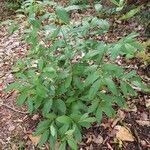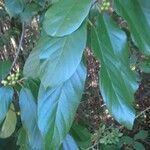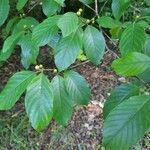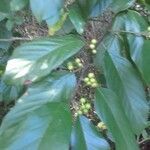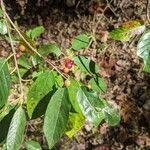Shrubs or small trees, 2–6(–10) m. Stems gray, glabrous or pubescent. Leaves deciduous; petiole 8–20 mm; blade dull green abaxially, glossy dark green adaxially, oblong to elliptic or obovate-elliptic, (3–)5–13 cm, herbaceous, base cuneate to rounded, margins serrulate or crenulate to nearly entire, apex acute to acuminate or obtuse, abaxial surface puberulent on veins, adaxial surface glabrous; secondary veins 6–9(–10) pairs. Inflorescences umbels, pedunculate, 1–14-flowered. Pedicels 3–6 mm. Stigmas 3-lobed. Drupes black, globose, 8–10 mm; stones 3.
